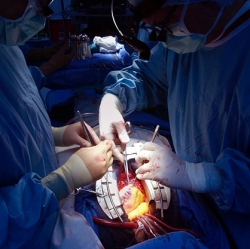
Each year in the United States about 325,000 people die due to sudden cardiac arrest (SCA). The vast majority of arrests occur at home, far from medical help which, if not delivered within minutes, normally results in death. Now an implantable defibrillator has just received FDA approval and could be the difference between life and death for many.
Boston Scientific Corporation won a major victory Sept. 28 with FDA approval of its subcutaneous implantable defibrillator, S-ICD. The company already supplies patients with ICDs, another kind of implantable defibrillator that connects to the heart through a series of insulated wires. What makes the new S-ICD defibrillator even better is that there are no wires needed – it is able to deliver electrical shocks to the heart without them. The new system not only simplifies implantation (attaching the ICD’s wires requires an x-ray procedure to visualize the beating heart), it also provides a safer alternative to many patients for which ICD is deemed too invasive.
When the heart stops beating during sudden cardiac arrest (SCA), death will likely result if treatment doesn’t occur within 10 minutes. The arrests are brought on by problems with the heart’s electrical activity that result in abnormal beating patterns. These abnormal beating patterns, or arrhythmias, can be too fast, too slow, or irregular, but all carry with them the risk for sudden cardiac arrest. The important role for electrical activity differentiates an SCA from a heart attack, which occurs when blood flow to the heart is blocked. By delivering an electric pulse to the heart, defibrillators reset the heart’s electrical activity and allow it to beat normally again. The major advantage of implantable defibrillators is their ability to monitor the electrical activity of the heart and deliver corrective pulses when needed, all without the help of medical professionals.
The recently approved device has two major components. A pulse generator, implanted at the side of the chest, provides the system with power, monitors heart activity, and delivers electric shocks if abnormal activity is detected. And an electrode, placed next to the breastbone, enables the pulse generator to both sense cardiac rhythm and deliver the shocks.
